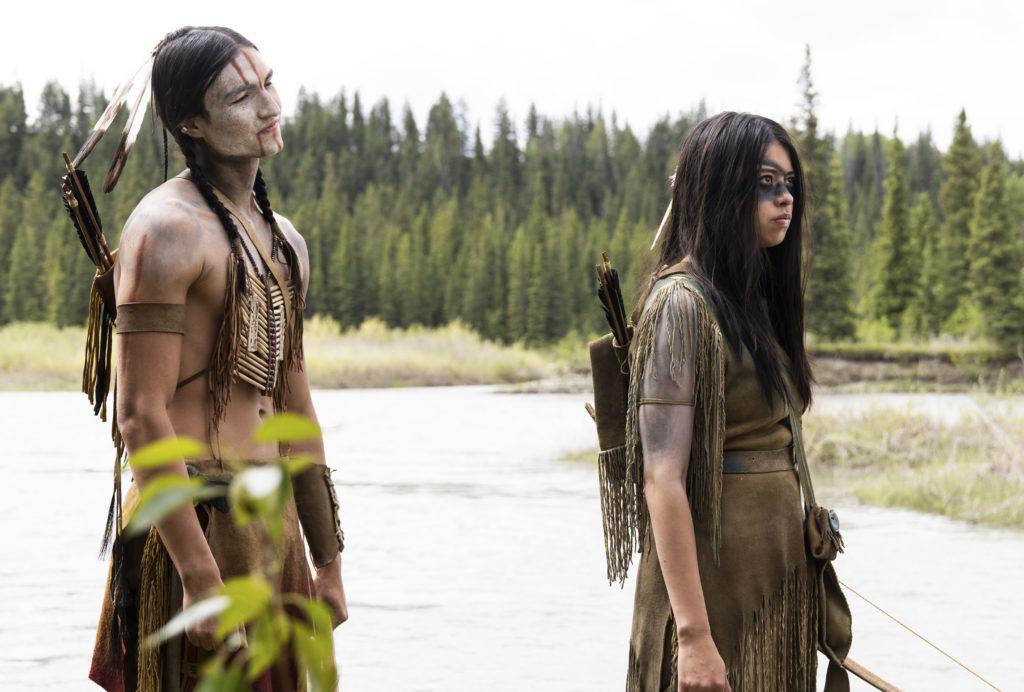Prey

(L-R): Dakota Beavers as Taabe and Amber Midthunder as Naru in 20th Century Studios' PREY, exclusively on Hulu. © 2022 20th Century Studios. All Rights Reserved.
“A long time ago, it is said, a monster came here.”
Thirty-five years after director John McTiernan, with writers John and Jim Thomas, created a tale that carries the size gag to new heights—beginning with flexing biceps and ending with a tactical nuke, Dan Trachtenberg and Patrick Aison team up to turn the story on its head, and for good reason. In the original film, PREDATOR, as a footnote to Special Operations Forces presence in Central America throughout the 1970s, a team is sent under false pretenses to push back against a Soviet foothold in the Americas—a throwback to countless attempts at regime change by both sides in the latter half of the twentieth century.
While both films are a commentary on the failures of patriarchal hypermasculinity, they work for audiences conditioned to different times in different ways. In the mid-1980s, when American Exceptionalism was very much in vogue, beset by cold war paranoia and the far right’s nascent gun fetish, DIE HARD’s McTiernan—no stranger to comical juxtaposition—served audiences a creature from the black lagoon of space, standing an entire foot taller than America’s favorite 6’4” sight gag.
In PREY, as the title suggests, turnabout is fair play. In 1719, about a decade after the first European settlers encountered the Comanche in North America, an unknown predator threatens the safety of a tribal village on the edge of the forest. Dissatisfied with traditionally-gendered roles, Naru (Amber Midthunder) with her dog, Sarii (Coco), sets to track and hunt the yet-unknown being. Except for her brother, Taabe (Dakota Beavers), the young men of the tribe scoff at Naru’s ambitions to complete the Comanche rite of passage—Ku?htaamia—to successfully “hunt something that is hunting you.”
Naturally, anyone watching the film likely knows the premise is set as a prequel of sorts to the 1987 film. The Predator, deposited on Earth by a cloaked ship Naru confuses for the mythical Thunderbird, seems to be an adolescent going through his own rite of passage—working his way up from snake to coyote, to bear, to Frenchman. The tribe thinks they’re tracking a mountain lion, but, in one of many adept demonstrations, Naru observes tracks too large to be such an animal.
The sibling dynamics between Taabe, who chides as older brothers do, and Naru feel relatable and anchor the film in a place refreshingly devoid of studio pressure to undercut Naru’s hero’s journey at the eleventh hour. She succeeds in spite of, not because of, the men and she returns home not to merely fall into the arms of a man.
Gender stereotypes aren’t all that are challenged here. Where the first film played on white people’s fears about Central American “savages” (thought to be the ones who skinned alive the first team of Green Berets), PREY introduces us to the modern apex predator: white colonists, specifically French voyageurs who settled Canada. Naru has to first survive them before she confronts the beady-eyed, insectoid-jawed hunter from another planet.
At first, seeing the Comanche speak English rather than a known and documented First Nations language seemed a backward choice, but started to make sense when all but one of the French speaking colonists, who understands some Comanche, are unaccompanied by subtitles. They aren’t meant to be understood by us or the Comanche, forcing us to relate most closely to Naru and her people.¹
Additionally, the visual storytelling makes the languages even less relevant. Sign language was in common use between tribes of the First Nations for many years before the Europeans arrived. When one tribesman is badly injured, instead of speeding forward to more action, the movie refreshingly uses the opportunity to show the technology of their culture—some collect fungi and herbs to treat wounds and provide analgesic relief, while others assemble a stretcher from branches and twine.
The cultural crash course also disguises many Chekhov’s guns. Naru’s keen observational skills will make use of a bog, some rope and a skull in a way that would make MacGyver blush with envy.
Even though many viewers might predict how the plot unfolds, it’s not upsetting in the least because the film is, at just under 100 minutes, eight minutes shorter than the original. Its lean, clever storytelling doesn’t rely on any mystery boxes where many other franchises keep trying to siphon that well dry no matter how tiresome.
In fact, the movie’s only glaring callback is played purely for grins. And grin we do, for when Taabe says, “If it bleeds, we can kill it,” he may as well be talking about toxic masculinity.
- Though unavailable with the press screener, there now appears to be a “Comanche dub” version available on Hulu with the official release.